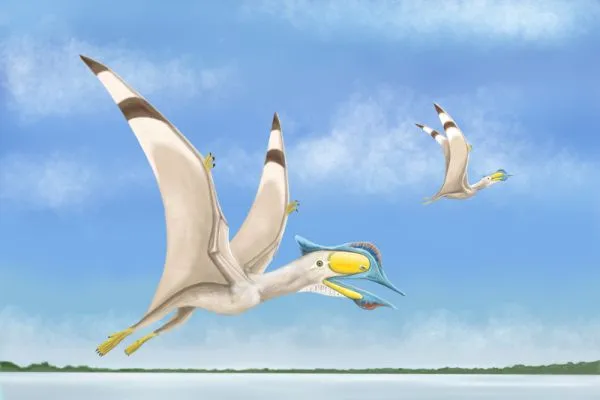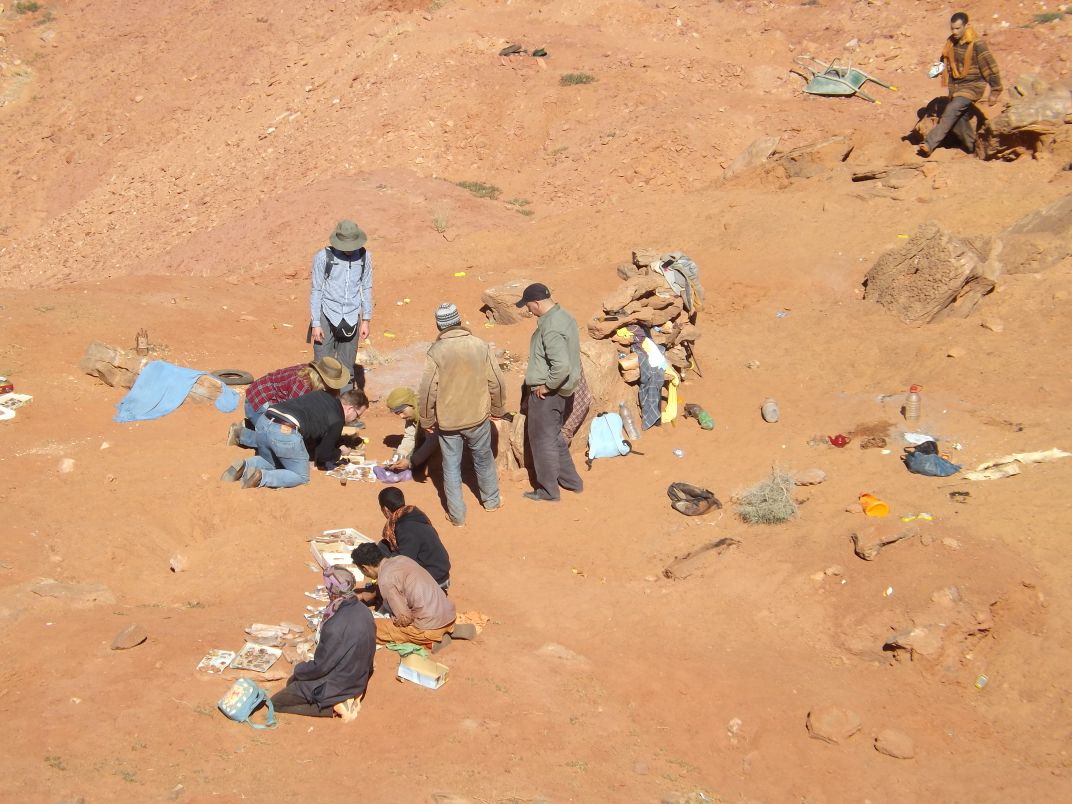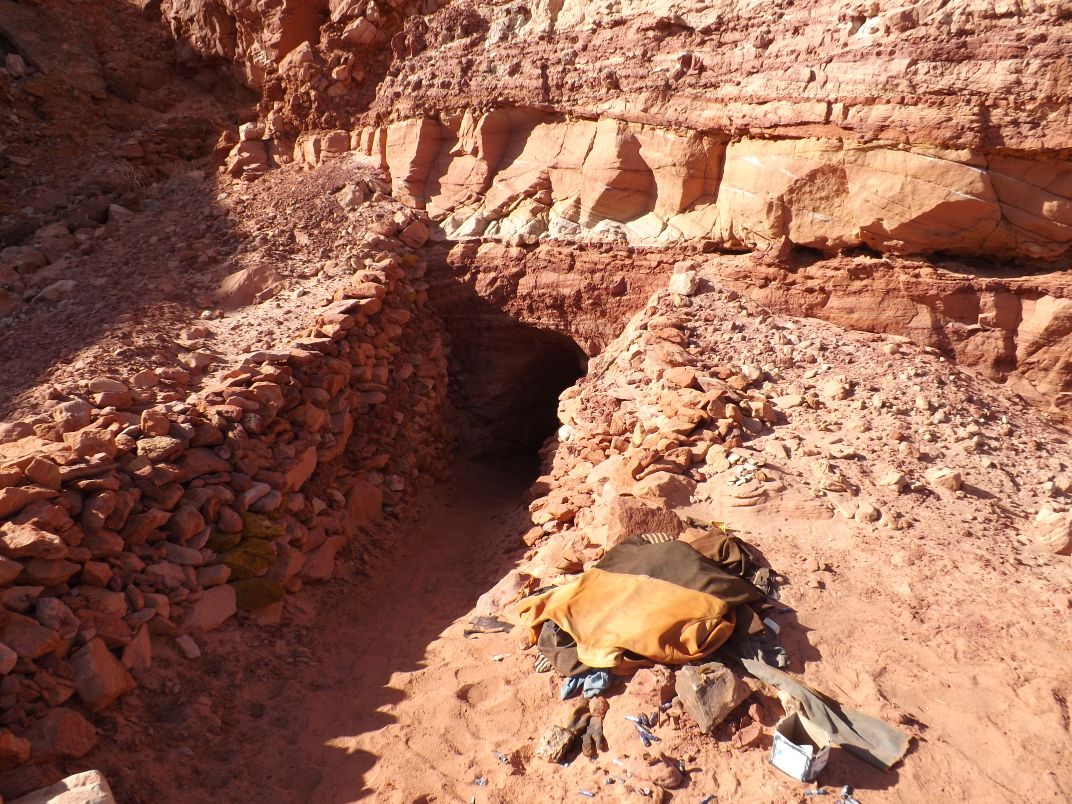Four New Species of Prehistoric Flying Reptiles Unearthed in Morocco
These flying reptiles patrolled the African skies some 100 million years ago
/https://tf-cmsv2-smithsonianmag-media.s3.amazonaws.com/filer/5b/71/5b71ea94-893c-464f-8f21-17d7fdeae769/pterosaur_2_1.png)
In recent weeks, paleontologists have reported four new species of prehistoric flying reptiles dating back to the mid-Cretaceous, or about 100 million years ago all found in Morocco.
These leathery-winged predators, part of an extinct group known as pterosaurs, were excavated from the Kem Kem fossil beds in southeastern Morocco. Three new species of toothed pterosaur, all part of the Ornithocheiridae family, identified from chunks of jaws studded with pointed teeth, were first reported last month in the journal Cretaceous Research. A fourth pterosaur, Afrotapejara zouhrii, which had no teeth, is the first of its kind found on African soil, identified by part of its skull, according to a University of Portsmouth statement.
“These new finds provide an important window into the world of African pterosaurs,” Nizar Ibrahim, a paleontologist from the University of Detroit Mercy, says in a statement. “We know so much more about pterosaurs from places like Europe and Asia, so describing new specimens from Africa is always very exciting.”
Researchers hypothesize these soaring hunters had 13-feet-wide wingspans, and snatched fish with their sharp teeth, forming part of an ancient river ecosystem that included crocodiles, turtles and predatory dinosaurs. The fourth species, Afrotapejara zouhrii, would have been similar in size, but toothless with a large crest on the front of its skull.

None of these pterosaurs would have weighed much despite their size. Like modern birds, their bones were thin and hollow, allowing the flying reptiles to reach large sizes without becoming too heavy to take off. But this flight adaptation makes pterosaur skeletons less likely to fossilize intact, leaving them scarce in the fossil record.
The three chunks of jaw bone from the toothed pterosaurs resemble existing specimens found in Brazil and England, leading researchers to tentatively place them in the genera Anhanguera, Ornithocheirus and Coloborhynchus, respectively.
If confirmed, such close evolutionary ties suggest these winged reptiles could have flown hundreds of miles across the newly forming Atlantic Ocean. (Modern birds such as albatrosses make similarly long flights.) Similarly, cousins of the toothless Afrotapejara zouhrii are well known in Brazil and China, with a few others found in Europe, according to a statement.
Discovering closely related pterosaurs on different continents also suggests the toothed pterosaurs had an almost global distribution, says Megan Jacobs, paleontologist at Baylor University and lead author of the new paper.
Jacobs’ research team bought the new specimens from fossil miners who live in the small village of Beggaa located near the Kem Kem beds. Villagers ascend rocky slopes to dig in the coarse red sands of the fossil beds and make a living selling their finds to dealers and scientists, according to a Baylor University statement.
“The work is, like any mining activity, potentially dangerous and hazardous to health from dust,” Jacobs says. “Many of the miners wear face masks, but by no means all.”

Matthew Carrano, curator of Dinosauria at the Smithsonian National Museum of Natural History who was not involved in the research, notes sourcing fossils this way is scientifically “complicated.” The main difficulty when fossils are purchased is knowing exactly where they came from, he explains.
“You can see in this paper that they have various levels of specificity for these fossils,” he says. “You can sometimes narrow down the area and rock layer by studying the sediment attached to the fossil, but in other cases it can be quite difficult or impossible. Each case presents its own difficulties.”
Carrano says that the discovery of the three new toothed pterosaur species in Africa suggests there was a thriving diversity of ornithocheirids right up until they disappeared around 100 million years ago, which could mean their extinction was sudden. The prevailing theory was that these families of toothed pterosaurs went extinct gradually during the Cretaceous, until only toothless pterosaurs like Pteranodon and the huge Quetzalcoatlus remained.

“Pterosaur remains are usually fragmentary and their overall record is pretty incomplete—making it hard to study the larger patterns of their evolution and extinction,” says Carrano. “It’s important to bring new species like these to light to try to understand those patterns.”
The addition of these four new species brings the total number of pterosaurs discovered at the Kem Kem Beds to ten, split evenly between toothed and toothless flyers. Even prior to the announcement of the fourth new species of pterosaur, researchers were understandably excited.
“We are in a golden age for discovering pterodactyls,” says David Martill, paleontologist at the University of Portsmouth, in a statement. “This year alone we have discovered three new species and we are only into March.”
/https://tf-cmsv2-smithsonianmag-media.s3.amazonaws.com/accounts/headshot/alex.png)
/https://tf-cmsv2-smithsonianmag-media.s3.amazonaws.com/accounts/headshot/alex.png)